Francis Halzen looks at you straight in the eye. Arms folded across his chest, an almost ironic smile dangling in his lips, he stands relaxed and self confident, cordial and dignified. But there is something else about this respected theorist, turned spokesperson of the hottest experiment of the year, ICE CUBE, the gigantic neutrino telescope in Antarctica. It takes me a while to realize what it is, but then is obvious. This friendly gentleman is dangerous. He belongs to a special class of scientists, the predators, who won’t stop hunting Nature until She will yield. Indeed, I can imagine that he introduces himself as: “my name is Halzen. Francis Halzen”. Yes. Agent 007 of Physics.
We have the pleasure to interview today Francis Halzen, the spokesperson and the leader of the ICE CUBE experiment, who is of recent fame for the discovery of extraterrestrial (possibly extragalactic) neutrinos. Francis, please, tell us when and how you come up with the idea of building a neutrino detector in the South Pole.
Well, I’m not sure if I can reconstruct everything, but there were two main ingredients. The first was that I knew about the DUMAND project, which had spelled out the idea of building a large neutrino detector, based in the Cherenkov effect, instrumenting a large volume of natural water. The concept was originated in the nineties’ in Russia, but the first serious attempt to do such an experiment was in Hawaii, where they wanted to put a detector (called DUMAND) about four kilometers under the sea level, off the coast of the main island in Hawaii. Although I never participated in that project, I knew everything about it because I worked with theorists in Hawaii, and I found myself going often for lunch with the people working at the DUMAND project. The second ingredient was that I was working on detecting neutrinos in ice with (the Spanish physicist) Enrique Zas…
With our very same Enrique Zas, from University of Santiago de Compostela?
Indeed! He was at the time a student in Madison, and we were working on the idea of detecting neutrino radio emissions in ice. When the neutrino interacts, it actually emits Cherenkov radiation in the Gigahertz band. The concept had been suggested by (the Russian physicist) Askaryan in 1963, but the original papers had not shown what the power of the signal was, apparently because, at the time, the Russians didn’t have enough computer power. In fact it was a hard problem, which Enrique solved brilliantly. But on the other hand, I knew about DUMAND, and since we were working on radio in ice, combining the two ideas was not a big deal, right? And so, the possibility of building a neutrino detector in ice was born.
The first paper I wrote on the subject was with John Learned, because he knew all the detection techniques, so in fact if you look at the ICE CUBE optical module it looks very much like one of DUMAND, this people pioneered a lot of this stuff. So, no sudden great spark, rather the notion came up to be gradually. Luckily I was quite naive and had not read all the books that I had to read before making the proposal. For example, should I have read the standard textbook of the time, called «The optics of water and ice», I would have never started the experiment.
Interesting!
Yes!!! In fact, ever since I always advise, specially to High Schools and undergraduates, «don’t read too many books, do things!» The truth is that, although at the time I was already around fifty, I was also a newcomer to the subject, and therefore naive and ignorant… which was good! I was suddenly twenty again, because I was working in a subject I didn’t know anything about, and this is why young people succeed. Once you get older and you believe you know everything about your field of expertise, then your reaction to a difficult problem is to go and look why things are impossible, and usually you find out that they indeed are. In fact, the book I refer to, would have confirmed that the light propagation in ice was so bad I couldn’t possibly do the experiment. So, if I had read it, I would have convinced myself that the whole concept was impossible. But fortunately I didn’t because many things said in that book were wrong.
Really?
The book stated that the absorption length of Cherenkov light in ice was around 8 meters. This means that after some 30 meters the light produced by a particle crossing the ice would have been totally extinguished. In that case, ICE CUBE would have been impossible, since to cover the huge volume of the detector, we need to separate the photomultipliers by hundreds of meters! But it turns out that the methodology of the experiments that had established those numbers was flawed, and the subsequent results were, therefore, wrong. As it is, the absorption length of Cherenkov light in Antartica ice is a hundred meters and in the bottom of the detector more than two hundred meters, much more transparent than water, for instance.
¿How did you find out that everyone else was wrong?
Well, when we deployed the first AMANDA (the precursor of ICE CUBE) strings, one of my post-docs at the time, Serap Tilav, came one day into my office and said «I can fit all the data when I change the speed of light». But changing the speed of light, was equivalent, in the math formalism she was using to… changing the absorption length, so we fit the data and found a huge number, two hundred-seventy meters… Eventually we found a very pretty and logical result. In short, the more pure the water, the more transparent, and, therefore, the larger the absorption length. But then, the typical ice in ICE CUBE is ultra-pure snow that fell on Antarctica a hundred thousand years ago and has compacted to ultra pure ice.
Brilliant!
Now this is the good news, but you probably remember also the bad news. Absorption length is not the end of the story, we also found a scattering length of only forty centimeters that would have killed the experiment, because light does not get absorbed but it is dispersed… the reason was air bubbles in the ice, and then, the textbooks said there could not be bubbles below four hundred meters, and again, the books were wrong! We made a model and found out that bubbles should disappear at fourteen hundred meters, and decided to build AMANDA below fifteen hundred meters. That was pretty daring, because we published the prediction in Science, and then put in the string, and… yes! We found that the bubbles were gone and we had a working experiment.
So there is this combination of serendipity, opportunity and walking a bit off the paved road to come up with something that big, right? When did you publish the first papers?
The first paper was funny, actually…it was a write-up of a talk I gave in a conference where I had been invited to talk about something else, I gave a lecture on QCD and particle physics in cosmic ray interactions, but then there was a parallel session on new detector techniques and I dared to risk a talk about AMANDA there, then, when I saw that nobody laughed at me, I wrote a paper, together with John Learned. The year was eighty-seven.
Twenty-five years ago.
So from that paper to cosmic neutrinos it took twenty-five years, but then this is about the standard in neutrino physics, right?
It’s like a Ulysses’s trip, you measure it in twenty years’ length.
Indeed. So we did well.
What about the Russians and their detector at Baikal? They were big players sometime, right?
Yes, Baikal was the first telescope to detect neutrinos in a natural medium (the detector was installed in the very clear water of Baikal lake). At the time the project was not ambitious enough but it seems that the Russians want to build now a big detector in Lake Baikal.
They also missed an opportunity.
Indeed, and they were ahead of us, just like DUMAND. Sometimes, being too early is a curse.
How did you pay for ICE CUBE?
We had some money from a private foundation at Wisconsin that supports research. They had thrown in a million dollars, and then NSF (the National Science Foundation, a major science funding agency at the USA) matched it. Luckily for us, at the time, NSF had the policy of supporting projects that were somewhat risky, their idea was that they didn’t have enough money, like DOE (Department of Energy) or NASA to support mega-projects, but they could still help experiments that could make a big hit. Ken Lane was at the time the director of NSF, and he supported very much the notion that great science could need a bit of gambling. So they risked their money and we built first AMANDA, then ICE CUBE.
So, no big committees, and review panels, they just hand you out the money.
Yes. This is one of the great things about the National Science Foundation. They have no system, unlike DOE who has every area parceled out. With NSF you can propose anything you like, anything! They will say yes or no, but if they fund you, they don’t tell you what to do, like DOE.
No micromanagement…
The real problem with micromanaging becomes that you cannot take any risks anymore, and you end up doing predictable experiments. You tend to do that because, unfortunately, such experiments are the easiest to get approved.
OK let’s move on. I remember that you told me, to my surprise, that you have never actually been in Antarctica in person. Why? Wouldn’t you like to go? BTW, if you decide to go, can you take us along?
If there was a reason for me to go I’d be happy to, but the truth is, there is none! You have to understand the way Antarctica works, when they were constructing the site for a new telescope and ICE CUBE there was a lot of essential people at the Scott-Amundsen station, engineers, masons, electricians, all kind of technicians. The biggest limitation for doing science at the South Pole is the number of beds you have. So the way the system works there is like this. You go to do your job, do it and get out fast. Many of us didn’t have a real reason to go, so we didn’t. I didn’t want to set the wrong example by going as a tourist (which I would have gladly done). Also, there is really nothing to see at the South Pole that I had not seen already, I mean, every piece of equipment that went into the ice left from the physical science laboratory fifteen miles south of Madison, so I’ve seen everything.
Gives us an example of such equipment.
Why, the hot water drills! They were probably the most challenging part of the experiment, and they were invented by means of an incredible collaboration between engineers and physicists, including graduate students… It was a beautiful project, and the principle is very simple. Just a column of water at high pressure and temperature! You shoot it to the ice and dig a hole of two and a half kilometers in it. That was the basic idea of ICE CUBE, digging deep holes, spaced over a surface of one kilometer square, and insert into them strings of steel to which the photomultipliers were attached. The sensors where covering a column of one kilometer, but they could only start at a depth of one kilometer and a half, to avoid the bubbles in the ice. So we had to melt a column of two and a half kilometers of ice in less than two days. For that, you need around five megawatts. This is a huge power, building those hoses was a true achievement.
Would you admit that you were lucky more than once?
Definitively. But unless you dare you can’t get lucky.
Following on this, the neutrino signal that is clearly now established by ICE CUBE, is not quite what the theory predicted. Do you think we understand what is being observed? Have you really found a new window there?
Well, that’s the key question now. We know there is some signal, we know that some of the neutrinos don’t come from our own galaxy, because they don’t point back to the galactic plane, but we are not sure where they come from and what is producing them. There are by now more than hundred papers on the web, some of which claim that we are seeing dark matter, I wouldn’t bet my wallet on that, but it’s possible, so the key is to find more events.
In any case you have found the needle in the haystack.
But there was no needle in the haystack, the detector worked like a Swiss clock, in good measure thanks to Dave Nygren and his Berkeley crew, and we could measure energy extremely well, so finding the events, once we refined our detection methods was actually easy.
So, a Brave New World.
Yes… everybody is asking how long will it take us to understand the origin and nature of the sources that are producing these neutrinos. And the truth is that it may be tomorrow, or it may take twenty years, but then the detector is built to operate well for at least twenty years. There’s a lot of work to be done; and so depending on what the answer is, the answer could come soon… or not.
So now that we have ICE CUBE, and we have this window, and we have these events, do you think it is worth to pursue the equivalent in the northern hemisphere?
I don’t really know the answer to this. It depends on whether having two detectors is useful. One could opt for that, but one could also try and make ICE CUBE as big as possible. The fact is, we have now a large neutrino telescope in ice, but not yet a neutrino telescope in the sea, and building one is not going to be easier than building ICE CUBE. Ice is nice, stable, and very well understood. So we could build a much bigger detector pulling everyone’s resources.
The only thing is that the northern hemisphere would allow you to look at a different region of the galaxy.
Yes. This is the merit of the two-detector option. So the key question is how long it will take, to build a large telescope under the sea. You have to consider this, and the cost (compared with the option of making ICE CUBE larger), to decide what is the best option.
So, a related question. Does it make sense to expand ICE CUBE to, say, ten times the size?
That would be great, but it would cost a lot of money… on the other hand, if you give me another round of strings I can probably make five times ICE CUBE.
Do you feel that the Higgs boson was the guaranteed discovery and ICE CUBE neutrinos the unexpected one?
Well I actually won money thanks to the Higgs boson. You know, there was a time when people thought that the Higgs wouldn’t be discovered, and it finally started to show some weak statistical evidence. And during that time I won many bets against people that thought that it would be a fluctuation.
Speaking of which: what is a theorist like you doing in an experiment like this?
That’s actually pretty simple: the experiment was started in strange ways. So I wrote these few papers on this idea, but first, let me clarify something. Theorists write two kinds of papers. One kind to explore the physics they really believe in, and another kind just to show how smart they are.
(laughter)
And my initial neutrino papers were certainly in the second category. I had never any intention of ending up doing this, but then things got out of hand. One day I got a phone call from someone at NSF I had never heard of, the guy was the director of Polar programs, and he told me «You know, we have two guys doing an experiment in Antarctica that’s never been approved, and that’s illegal. And everybody tells me you put them up to that». And I said: «Who are they?» “Two grad students from Berkeley”, was the answer, “Steve Barwick and another guy called Lauder”. And I said: «Well, I’ve never heard of them», which was true.
What were these guys doing in Antarctica?
They had read the papers, and they have managed to get hired as drillers with a Caltech crew, and after the drilling was done, they tried to sneak some photomultipliers in the ice. And they were caught, and of course interrogated! The NSF guy couldn’t believe that that those crazy grad students were acting on their own, so he called me, hoping, I guess, that I would confess to be the instigator of the deed.
They really were trying to sneak photomultipliers into a hole in the ice?
They did, and the NSF guy calls me after their confession and says: «you put them up to doing something totally illegal and irresponsible». So I tried to explain myself, and after the call went on for ten minutes, the NSF chap had forgotten he was mad at me. “Hey, this is and interesting idea”, he said. His name was Zimmerman, he was the director of polar programs, and the next thing I knew I was in his office discussing how to get started.
That is a very nice story.
Indeed it is! After our initial discussion I asked whether I had to submit a proposal and he answered: «nah, this is totally crazy, if you submit a proposal it will never be approved, so instead we will give you some money on the side”.
Money on the side? Like handling it into an envelope, or something?
Almost. They had then, and still have, something called a Special Grant for Explorative Research, SGER. Not much, I got some fifty thousand bucks, but that was enough to kickoff the project.
Discreetly.
FH; That was the idea. NSF has this great way of letting scientist do their science. And then, I got another eighty thousand, and after a while, we were rolling.
What about the two “guerrilleros”, are they still in ICE CUBE?
One of them left the field, but he was in ICE CUBE for a long time, Steve Barwick is a professor at Irvine, and he is still in ICE CUBE.
So two grad students…
And a theorist! But, then, of course, I was suddenly in charge of these two guys and had fifty grand in my pockets, I was an established experimentalist with a group, I was a PI (Principal Investigator)!
What a story!
So we got started and at some point, things became real. AMANDA (the precursor of ICE CUBE) was still OK, but when we started the big experiment, ICE CUBE, I knew this was really risky and difficult, this required a solid experimentalist, and I didn’t want to continue to be in charge. But NSF said, «It’s either you or it won’t happen». Why? Certainly not because of my administrative (laughter) skills, I think it was because apparently I manage to keep everybody reasonable all the time, which as you know is not easy in an experiment.
A distinguished scientist whom you may know, once told me that the average mental age of physicists is about twelve… is this the reason why collaborations are hard to manage?
I wonder who said this (laughter)! But yes, I dare to say that the only one who was twenty one (mental age) in the experiment, was Dave Nygren. On the other hand, young people are less afraid of things, so perhaps you need a bunch of mental teenagers to get an experiment like ICE CUBE rolling.
Now a question for the general public. Is there more than basic science going on in Antarctica? Is there a hidden program, military investigation, secret bases?
Sorry to disappoint you, but not at all. The Scott-Amundsen station operates under the Antarctic treaty, and the US takes it very seriously, sometimes much too seriously. They enforce the rules, sometimes painfully for us. In particular, there is no military presence in Antarctica, it’s the NSF who run things. The pilots of the planes come from the National Guard. But in the US the National Guard is not military.
Was it always like this?
No, things were different in the fifties. Operation Deep Freeze, there’s no doubt this was Cold War stuff. But I don’t think anybody has ever given me an argument why it’s strategically important to be in the South Pole (laughter)… Probably it was just for shows. Like being the first in the Moon. But both, going to the Moon and to Antarctica were good things for science at the end.
What do you think is the most innovative concept from the instrumental point of view in Ice Cube? The optical module, the electronics, the drilling techniques…is there something you would identify or is it a combination of several things?
I think the real breakthrough were the optics of the ice that nobody knew about, Nature made the big breakthrough for us. But it took a while to convince other scientists, in particular glaciologists that Nature was being kind with us, our paper on the optics of ice went to Science because we knew that no glaciologist journal would publish it. In fact, when John Learned went to give a talk at a glaciology conference about this, they scheduled him during the banquet (laughter).
What topic interests you more in particle physics these days? What do you find more exciting, more intriguing?
I think the key issue is still whether there is new physics at the LHC and maybe the Higgs is the vehicle to find out, although for that we may need a linear collider.
Do you think that dark matter can be the missing particle…
Yes, it could be a super symmetry particle. But the question is whether we can produce it and detect it at the LHC. We don’t know yet.
Applied science versus basic science. Do you think is there’s such a real distinction, do you worry about the obsession of politicians to fund mostly applied science these days?
In the US that’s actually not true anymore. I think funding agencies have finally understood the connection between fundamental and applied science. In fact you don’t have to be very smart to grab this, right? Japan took that decision years ago, they realised that the physics in your cell phones and laptops came from what was considered fundamental science just a few years ago. If you only do applied science you become a country that manufactures cell phones, instead of developing them, and I think that’s understood now in the US. To be ahead, you have to invest in basic science. In fact there is a move to double the budget of the National Science Foundation, NIST,DOI, etc. Cutting basic science is totally short sighted. The obvious example, of course, is CERN and the WWW. This development has already paid many times, say, the LHC. Not to mention other classical examples, such as the transistor, antibiotics, x-rays…
Is the economic crisis hitting ICE CUBE and general science in the USA?
As I said, there was that move to double the budgets of NSF and all the funding agencies over five years, and then the crisis came in ´09 and that stopped, I remember an NSF person telling me «Flat is the new word for doubling» (laughter). But now they are discussing again about rising the budget. So ICE CUBE certainly hasn’t suffered yet, the crisis had, in fact, no real impact. On the other hand, these days it’s much more difficult to try to start something new, there is not enough money for new projects and that is bad.
Recently Randy Skegman has attacked the journals Nature and Science, accusing them of snobbism and elitism. What do you think?
I think he said the truth, those journals are elitist and biased towards the science that is considered “hot” at the moment. The question is, is that bad? The point is that Nature and Science are vehicles for outreach, they are widely known by the general public. Maybe they are not the ideal way for publishing our best results given their flashy ways but then nothing prevents you from publishing in Physical Review or in European Journal of Physics. Maybe the whole point is not to take such journals so seriously.
Let’s talk more about science and society. In Spain there is a problem, we think, with something that we would call Cainismo, this is a tendency to oppose everyone that moves a little bit too high, is too fast, or too bright. It often manifests itself by refusing to acknowledge the work of such people, so we find often cases in which an active Spanish scientist is much better known, say in the US than here, because his colleagues try very hard to ostracise him or her. Have you detected the same effect in the US?
This is a funny question, because I and many other people think this effect exists in Wisconsin, and it’s very difficult to discuss, because it has nothing to do with science, it’s is a sociological effect, and I don’t know where it comes from, you know, is like there is a feeling, in some social conditions, that you don’t deserve to do well. It’s not just jealousy. There is something deeper at work there and I don’t know what it is, or what are its sociological origins, but it surely exists. In Wisconsin they have a football team, the Greenbay Packers, and they love them more when they are mediocre or lose (laughter).
When we interviewed Dave Nygren and Sandro Bettini we asked them a question that we want to ask you now too. What is the difference between physics when you were younger, and physics now?
I think it’s huge. I am blessed of having started physics exactly when it became a respectable profession. I got my Phd, and then I suddenly realised I had to get a postdoc position somewhere. Today this is the standard, but in my age, you just did physics for a while, then quit and got a real job, unless you were rich. The extreme example of this was Ehrenfest, who came from a wealthy Russian family and never made a cent until he replaced Einstein as a professor in Leiden. So this is an extreme case, but the attitude that you don’t make money with physics, that physics was not a profession but some kind of passion, was very clear in the older people before me. I’m not saying that the new generation is not passionate about science, they certainly are, but their expectations are different. They know they can make a career, find decent jobs, while searching for dark matter, cosmic neutrinos or neutrinoless double beta decay. No one before my time thought that was possible.
They were more like artists, then.
They couldn’t help it; they would have done physics even if you didn’t pay them. I’m sure that there are still lots of people around who would do the same. But the climate has changed, the number of positions has multiplied. Before, there was just one professor per department. Now you can have 20 o 30 professors in a medium physics department, plus research positions, plus long term contracts… science probably can absorb hundred times more people than before.
Last question: If you were in my position… Which scientist would you interview?
That’s a tough one. But the number one in my list is Fermi. He was a great scientist. Everything he did was crystal clear; he has a mind of a simplicity and exceptional clarity, even though I never met him, it’s clear from everything he wrote. Then we could add Pontecorvo, I was actually lucky enough to meet him in Italy. I wish I would have dared to ask him why he went to the Soviet Union, although I think the answer is that he really believed they were creating a better system there than in the West. He was idealistic. Perhaps because he was also an old physicist, before physics became a respectable profession. He was one of those people who thought that physics was just life.
Photograph: Javier Díez



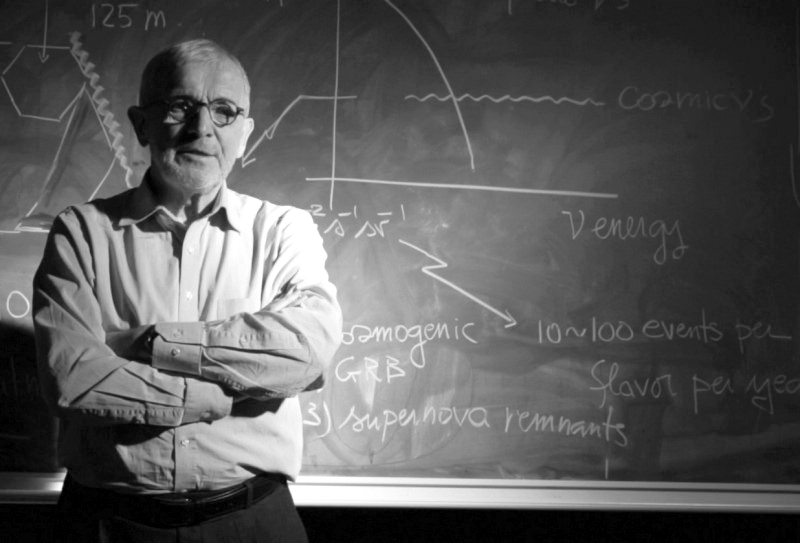
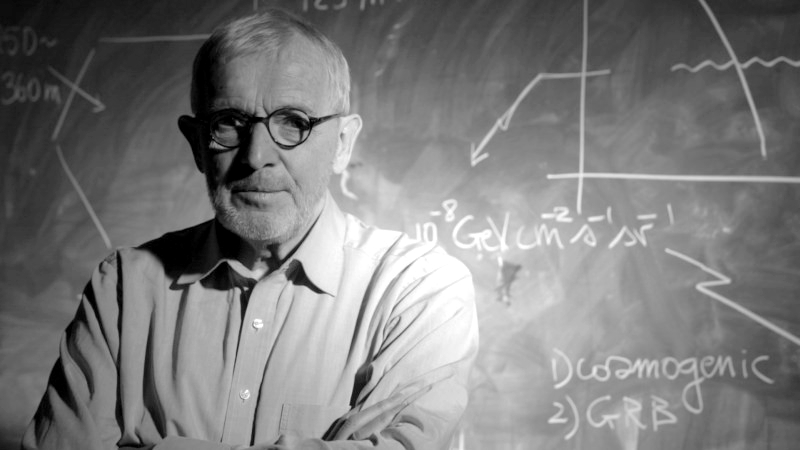
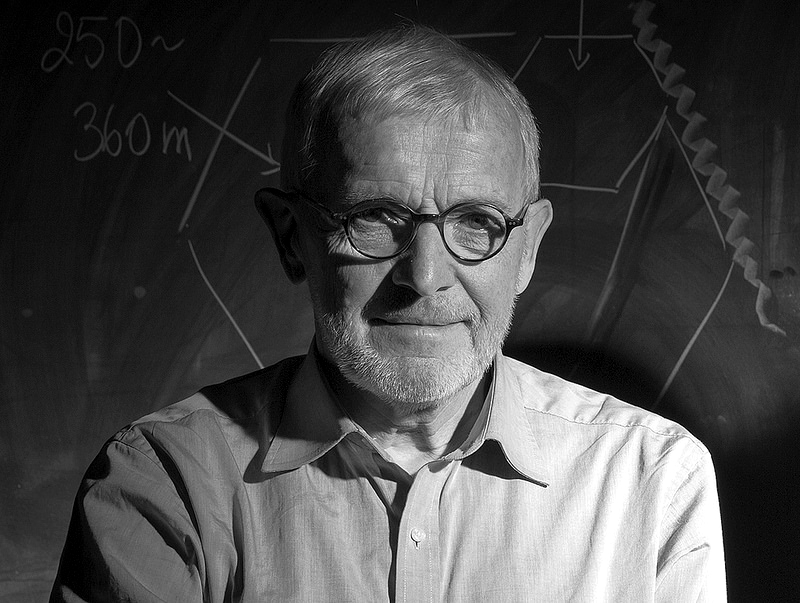
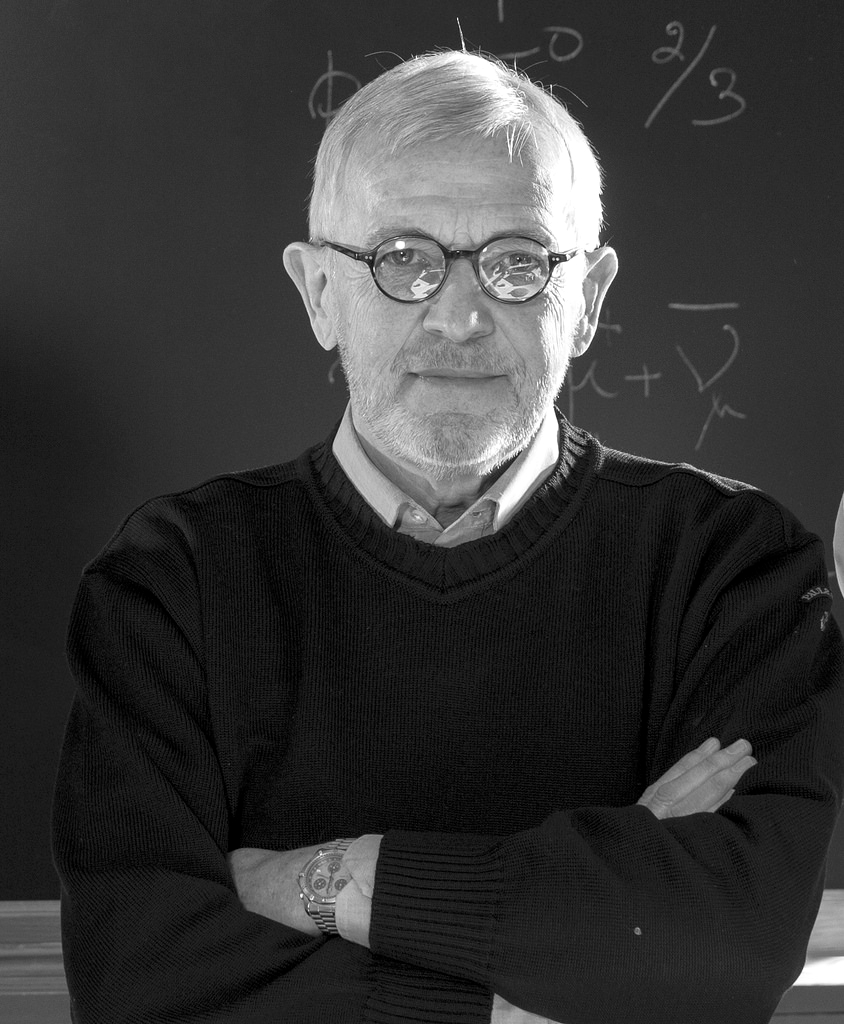


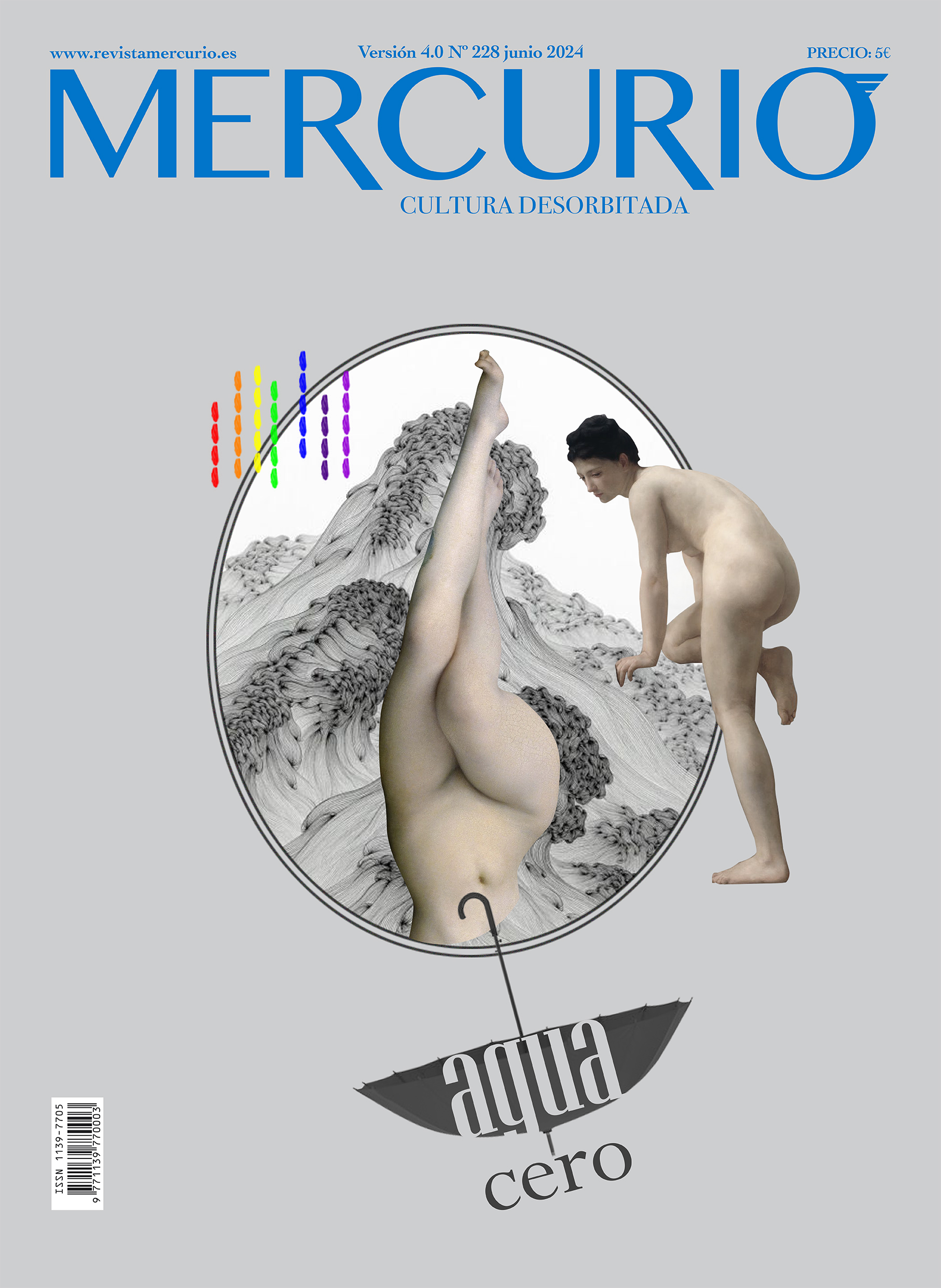

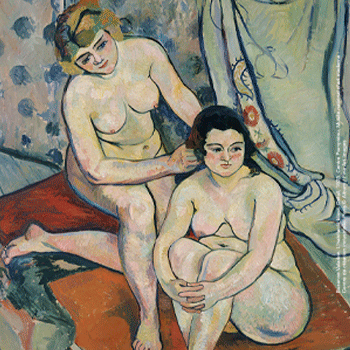

Pingback: Francis Halzen: «Siempre aconsejo a mis estudiantes “¡no leáis demasiados libros, haced cosas!”»
Nice interview, I learn quite a lot from Halzen’s textbook. Met him years ago in a summer school. Really great guy.
One minor correction. I doubt Askaryan was Russian. His surname is Armenian. Wikipedia says he was born in Moscow, but clasifies him as Soviet Armenian.
Private information bags which no more than the pros were aware about.
Washington Redskins #59 London Fletcher Elite Grey Shadow Men’s Nike NFL Stitched Jersey on sale,NFL-Washington Redskins http://www.b-a-o.com/New-York-Knicks-7/Washington-Redskins-59-London-Fletcher-Elite-Grey-Shadow-Men-s-Nike-NFL-Stitched-Jersey-on-sale-NFL-Washington-Redskins-21fe.html